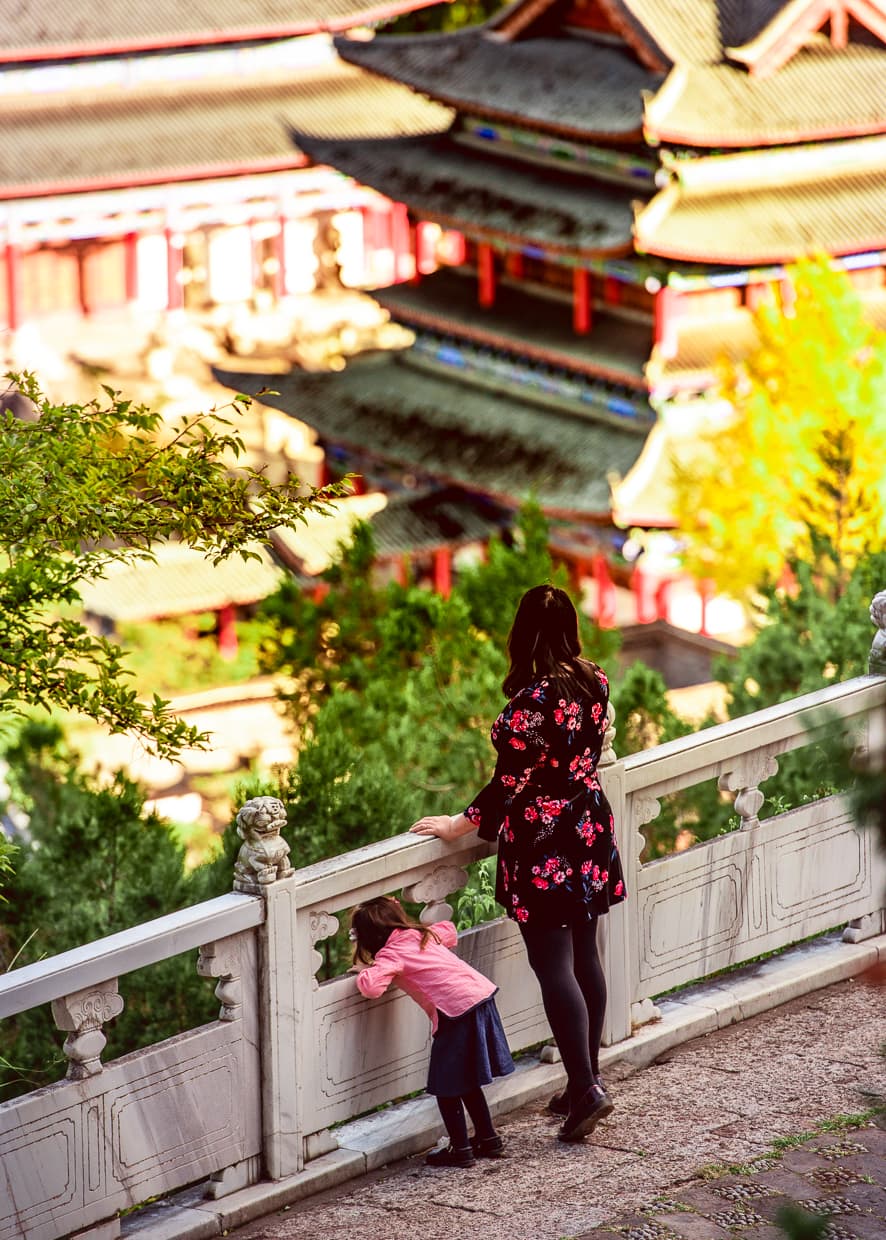Wangu Tower is a 33 meter high pavilion at the top of Lion Hill, Lijiang, the highest point in Lijiang city. Wangulou Tower offers superb views overlooking the old town of Lijiang.
The Wangu Tower is a five-story structure with the longest natural pillars of such towers in all of China.It is a landmark building of Lijiang ancient town. The wooden Pavilion was reconstructed in 1997 as part of the Lijiang areas' declaration as a UNESCO World Heritage Site.
Wangu Pavilion is located on Lion Hill, within the Lijiang Old Town district, Yunnan, China. The wooden Pavilion was reconstructed in 1997 as part of the Lijiang areas' declaration as a UNESCO world heritage. Wangu Pavilion means 'the pavilion of everlasting clarity Within the Yunnan provence, the region is mountainous with many rivers, so the town was built on a mountain slope facing a river. Timber homes and domestic buildings of the Naxi minority culture have remained, demonstrating the evolution of architectural styles and building methods over dynastic periods. Han and Qing Dynasty architectural features are also dominant. This includes the timber structure with elaborete arches and roof beams, exterior verandahs, tiled roofs and ornamantation of the building. Carved wood reflected the cultural influences from local flora, native and mythological animals typically Phoenix and Dragons.
Wangu Pavilion is a landmark building of Lijiang. In Naxi language it is called “Wengu Lun”, which has similar pronunciation of “Wangu Lou” in Chinese, thus got the name Wangu Pavilion (lou means pavilion), literally means “the pavilion of eternities”.
After ascending the Wangu Pavilion, you can see magical Yulong Snow Mountain in the north, beautiful Lijiang Ancient Town in the east, picturesque pastoral villages in the south and colorful Lijiang new town in the west.
With five-story and whole wooden structure, Wangu Pavilion is 33 meters high, symbolizing the original 330,000 people of all nationalities in Naxi Autonomous County of Lijiang. The pavilion is mainly constructed on 16 columns and each one is 22 meters in height. The use of 16 columns reflects a legend of epoch-making seven sisters and nine brothers in Naxi Dongba hieroglyphs, meaning Naxi people creating a better world together. The height of 22 meters reflects the saying “Good things should be in pairs”and the marriage custom of selecting double day as the auspicious day.
There are four pairs of different stone lions at four sides of the pavilion and stone stairs leading to its main entrance. Wangu Pavilion is decorated with 2,300 auspicious patterns, representing 23 ethnic groups living in Lijiang. As an art form, 9,999 dragon patterns are sculptured or painted in the entire building. To add one more dragon at the caisson ceiling to reach 10,000, pronounced in Chinese as “wan”, would give the meaning of ever-lasting or eternal prosperity.
While the Lijiang area is a UNESCO World Heritage Site, traditional architectural craftsmanship a s seen in the area, has placed Wooden framed structures onto the Intangible Cultural Heritage List. This includes the timber structure with elaborete arches and roof beams, exterior verandahs, tiled roofs and ornamantation of the building. Decoration was not limited to final colourful paining. Carved wood reflected the cultural influences of local flora, native and mythological animals typically Phoenix and Dragons.



